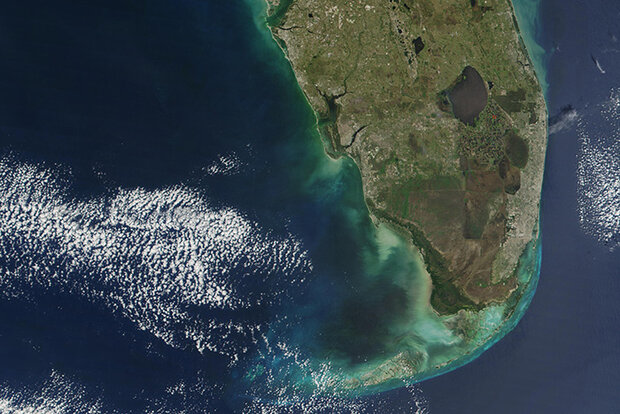New study links red tides and dead zones off Florida’s west coast

A red tide occurs along Florida’s west coast, captured by satellite. Credit: NASA

A red tide occurs along Florida’s west coast, captured by satellite. Credit: NASA
A new study found that when red tides began in early summer and continued into the fall, low oxygen areas—or dead zones— were more likely to also occur. This study by scientists at the University of Miami Rosenstiel School of Marine and Atmospheric Science, and NOAA collaborators is the first study to link low oxygen—or hypoxia—to red tides across the west coast of Florida and offers new information to better understand the conditions favorable for combined events as they are expected to increase as Earth continues to warm.
Red tides are becoming a near annual occurrence off the west coast of Florida, which are caused by massive blooms of the algae Karenia brevis fueled in part by excess nutrients in the ocean. These algae blooms turn the ocean surface red and produce toxins that are harmful to marine mammals, sharks, seabirds and humans causing a range of issues from respiratory irritation, localized fish kills to large-scale massive mortalities to marine life. Hypoxic areas are typically referred to as ‘dead zones’.
Read more at the link below.